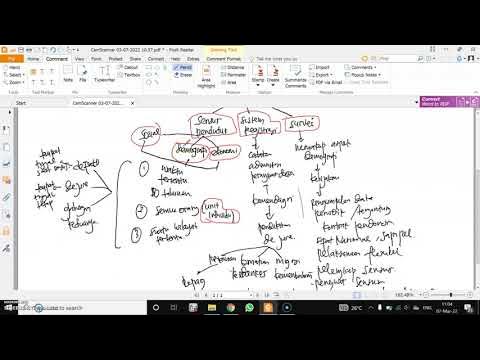STATIC GK FOR SSC | CENSUS 2011 | PARMAR SSC
Summary
TLDRThe video script discusses the Indian Census, focusing on the importance of data collection every 10 years. It delves into historical census events, population distribution, literacy rates, and religious demographics. The speaker highlights the significance of the 2011 Census and compares it with previous years, noting the growth and changes in India's population, including urban and rural literacy differences and the impact of migration on population density.
Takeaways
- 📊 The script discusses the Census of India, highlighting its importance and the process of data collection that occurs every 10 years.
- 🏛 The first synchronized or complete census in India was conducted in 1881 under Lord Ripon, who is often referred to as the 'Father of Local Self-Government'.
- 📚 The speaker mentions the 'First Factory Act' and the ' Vernacular Press Act', indicating significant legislations that were enacted during the period of the censuses.
- 🗓 The most recent census mentioned in the script is the 2011 Census of India, which was supposed to be followed by another in 2021 but was delayed due to the COVID-19 pandemic.
- 🌍 According to the 2011 Census, India's population was recorded at 1.21 billion, making it the second most populous country in the world.
- 🔢 The script provides detailed statistics on population growth rates, sex ratios, and literacy rates, emphasizing the differences between states and districts within India.
- 👥 It is noted that the sex ratio in India, according to the 2011 Census, is 943 females per 1000 males, indicating a higher number of males in the population.
- 📚 Literacy rates are discussed, with a significant increase observed from 64.8% in 2001 to 74.4% in 2011, showcasing improvements in education over the decade.
- 🏙️ The script touches upon urban and rural literacy rates, indicating that urban areas have higher literacy rates compared to rural areas.
- 📈 The population density of India is mentioned, with a figure of 382 people per square kilometer according to the 2011 Census, showing the variation in population distribution across the country.
- 🏛️ The religious composition of India's population is also discussed, noting the growth of different religious groups and their literacy rates.
Q & A
What is the purpose of the lecture?
-The lecture is about the Census of India, focusing on important aspects such as population, literacy rates, and sex ratios, as well as historical data and projections based on the 2011 Census.
How often is the Census conducted in India?
-The Census in India is conducted every 10 years, with the latest being the 2011 Census.
What was the first synchronized or complete Census in India?
-The first synchronized or complete Census in India was conducted in 1881 under the supervision of Lord Ripon.
Who is considered the 'Father of the Indian Census'?
-Sir Henry Walter is considered the 'Father of the Indian Census' for conducting a city census during his tenure.
What is the current population of India according to the 2011 Census?
-According to the 2011 Census, the population of India is 1.21 billion.
What is the sex ratio in India as per the 2011 Census?
-The sex ratio in India as per the 2011 Census is 943 females per 1000 males.
Which state has the highest population density in India?
-Bihar has the highest population density in India, with 1106 people per square kilometer.
Which district has the highest literacy rate in India?
-The district with the highest literacy rate in India is Lakshadweep, with a literacy rate of 91.8%.
What is the current literacy rate in India?
-The current literacy rate in India, as per the 2011 Census, is 74.4%.
Which state has the highest growth rate in population among the states in India?
-Meghalaya has the highest population growth rate among the states in India, observed at 27.8%.
What is the significance of the 'Year of the Great Divide' in the context of the Indian population growth?
-The 'Year of the Great Divide' refers to 1921, marking a significant shift in India's population growth from a slow to a rapid pace, which has continued since then.
Outlines

此内容仅限付费用户访问。 请升级后访问。
立即升级Mindmap

此内容仅限付费用户访问。 请升级后访问。
立即升级Keywords

此内容仅限付费用户访问。 请升级后访问。
立即升级Highlights

此内容仅限付费用户访问。 请升级后访问。
立即升级Transcripts

此内容仅限付费用户访问。 请升级后访问。
立即升级浏览更多相关视频

SUMBER DATA KEPENDUDUKAN - MATERI KULIAH DASAR KEPENDUDUKAN

Geografi Kelas XI (22) Sumber Data Kependudukan di Indonesia | Sensus, survei, registrasi penduduk

¿Qué es un censo? Definición ✍📝 Historia en Argentina

Why is Article 246 in News? | Shubham Sagar | StudyIQ IAS English

2020 Census: What is the Census?

Bicara Aset Jakarta I BIJAK Episode 1 : Inventarisasi BMD Pemerintah Provinsi DKI Jakarta
5.0 / 5 (0 votes)
